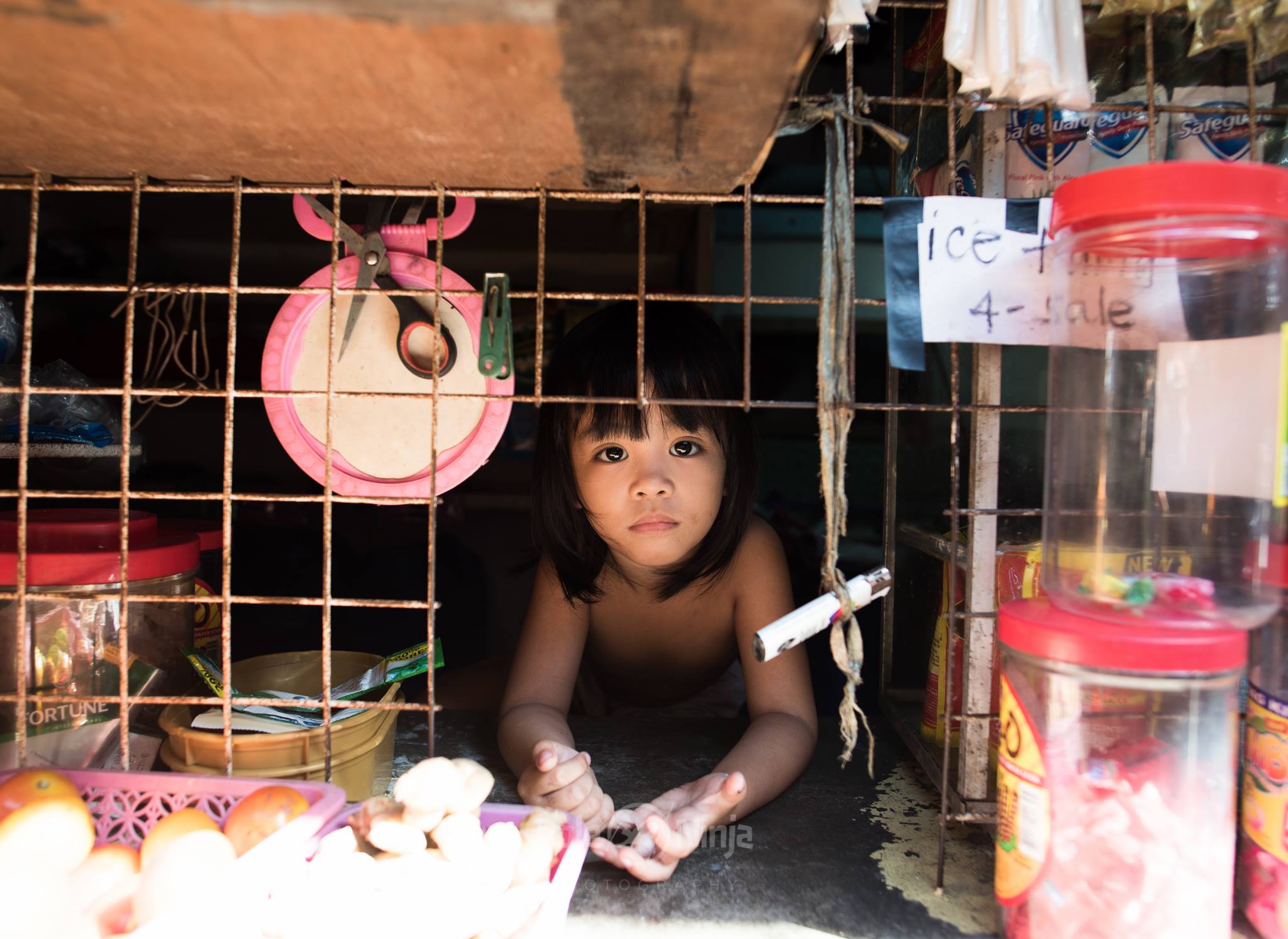
To me, this was the shot that made the entire journey worth it. This young girl, in the middle of the slums, peeked through the store window. I barely got the shot off before she was gone, like she was never there.
The stores are relatively few, and what they sell is almost entirely scavenged. But in it is the microeconomy that could seed the beginnings of something more, someday.
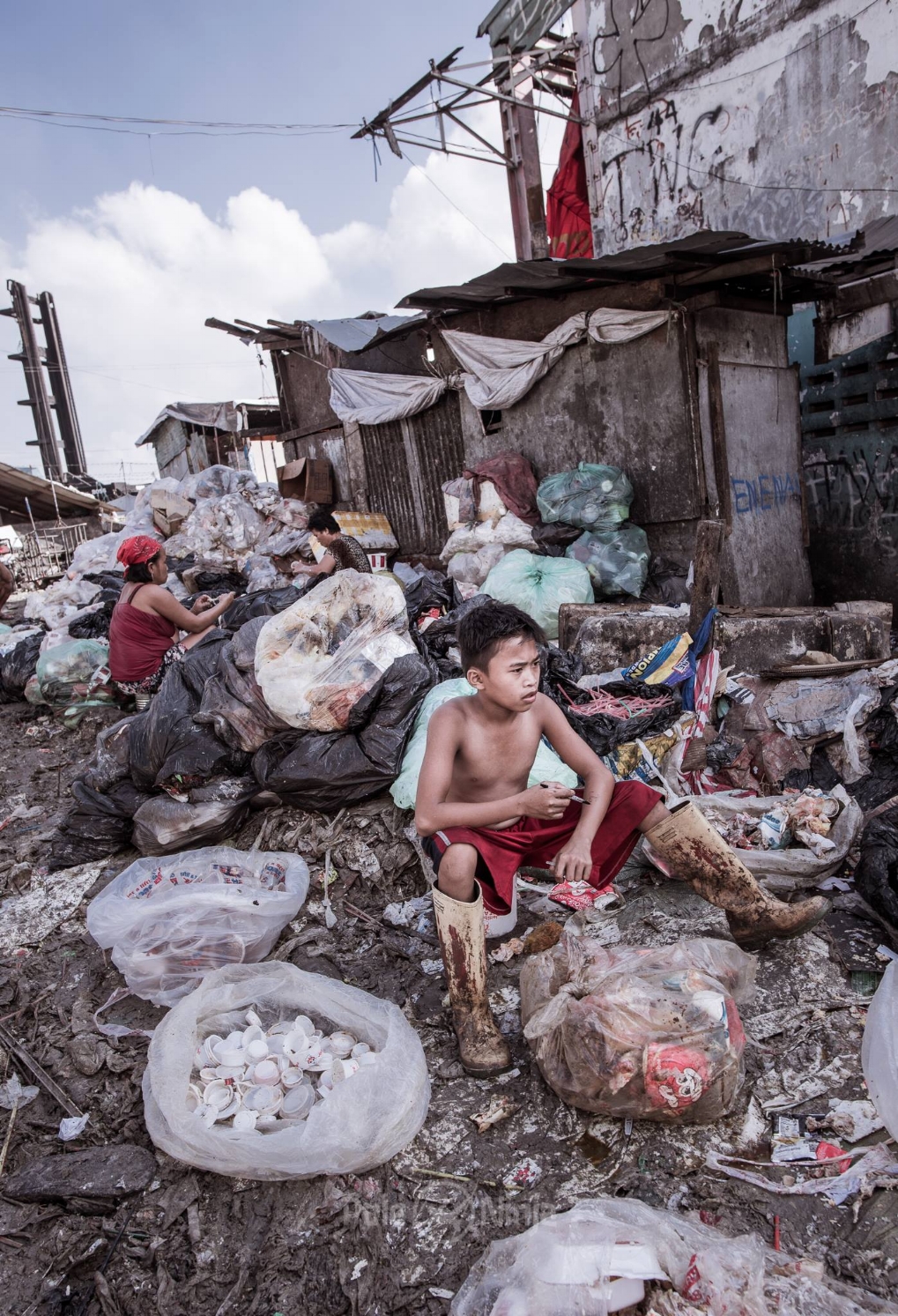
Men, women, children all dig through the trash, looking for scraps of meat. KFC is great for them, and they often strip that meat, clean it, and sell it again. Besides eating it themselves, most go out and sell the recovered food at street carts. We were given the opportunity to eat some of this, which they called, "pagpag."
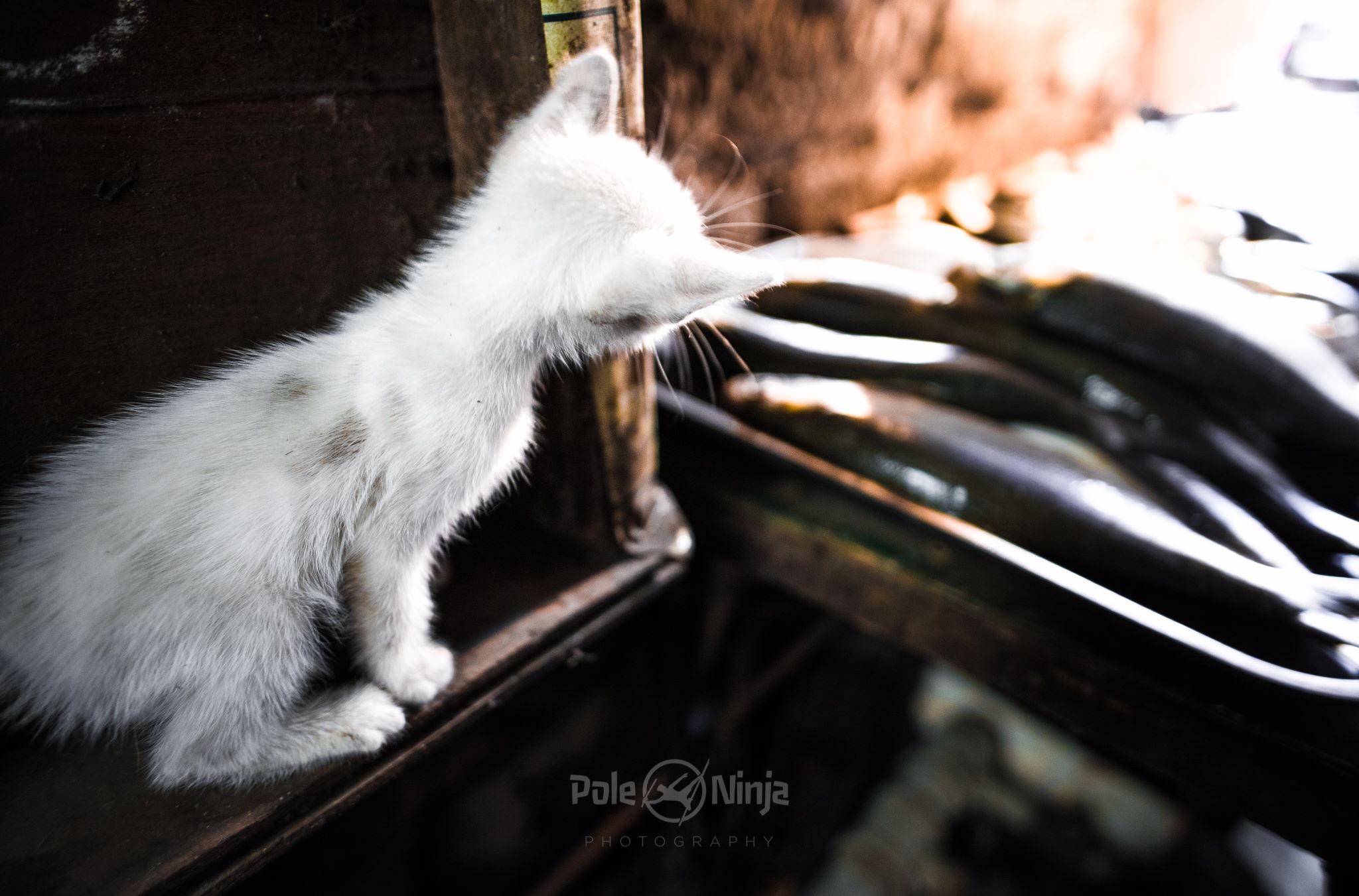
I think this was the most food I saw the entire time through the slums. And of course, the cat was adorable.
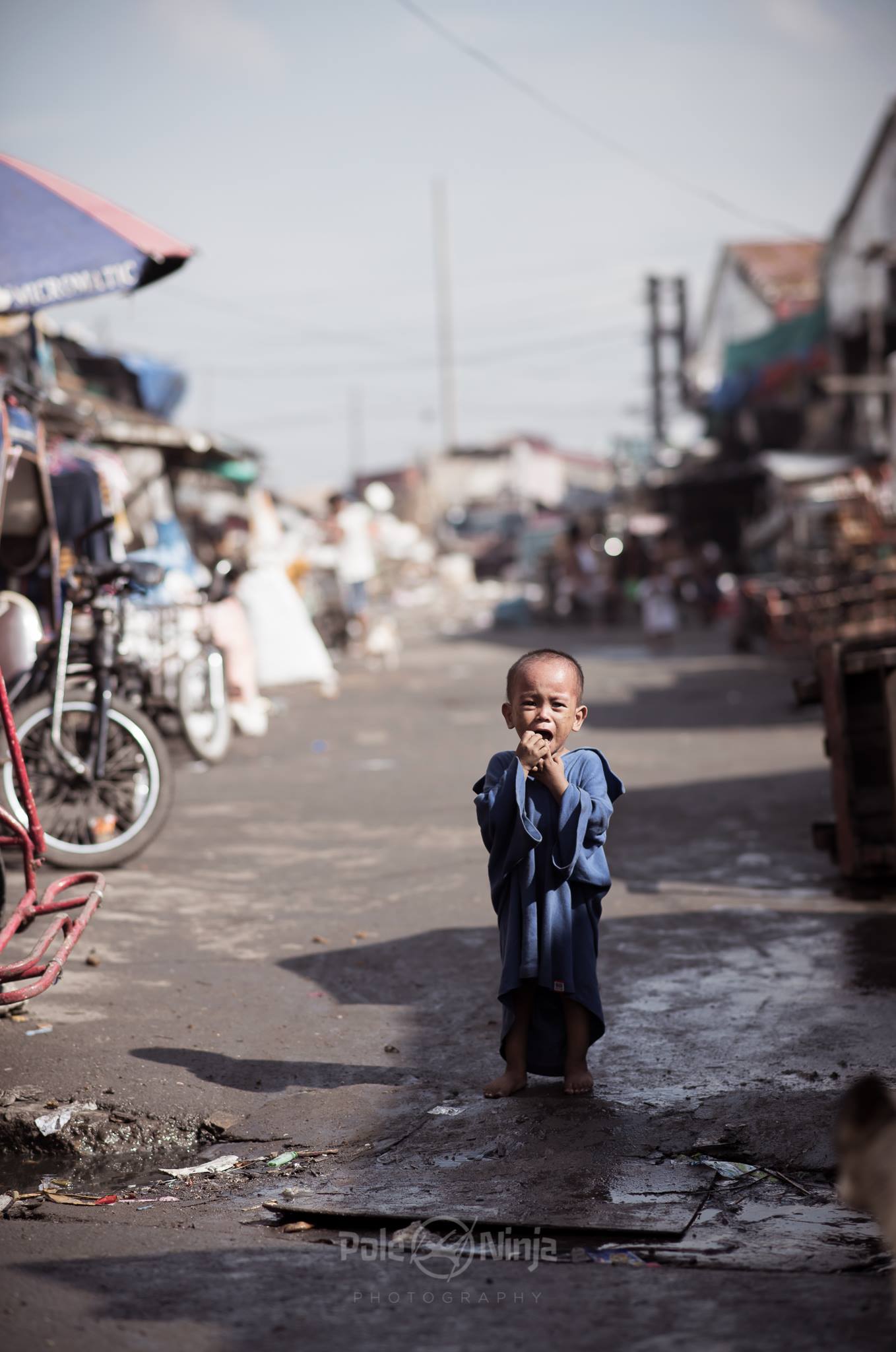
I thought this kid looked like a monk as he came running forward toward us. As with the other picture, I don't know why he is crying, so please don't make assumptions. But I did feel bad for whatever his plight was.

There is very little room, so they've made these houses on stilts that sometimes are threatened by rising waters. But as dangerous as it is, especially under the bridges, they still do it.
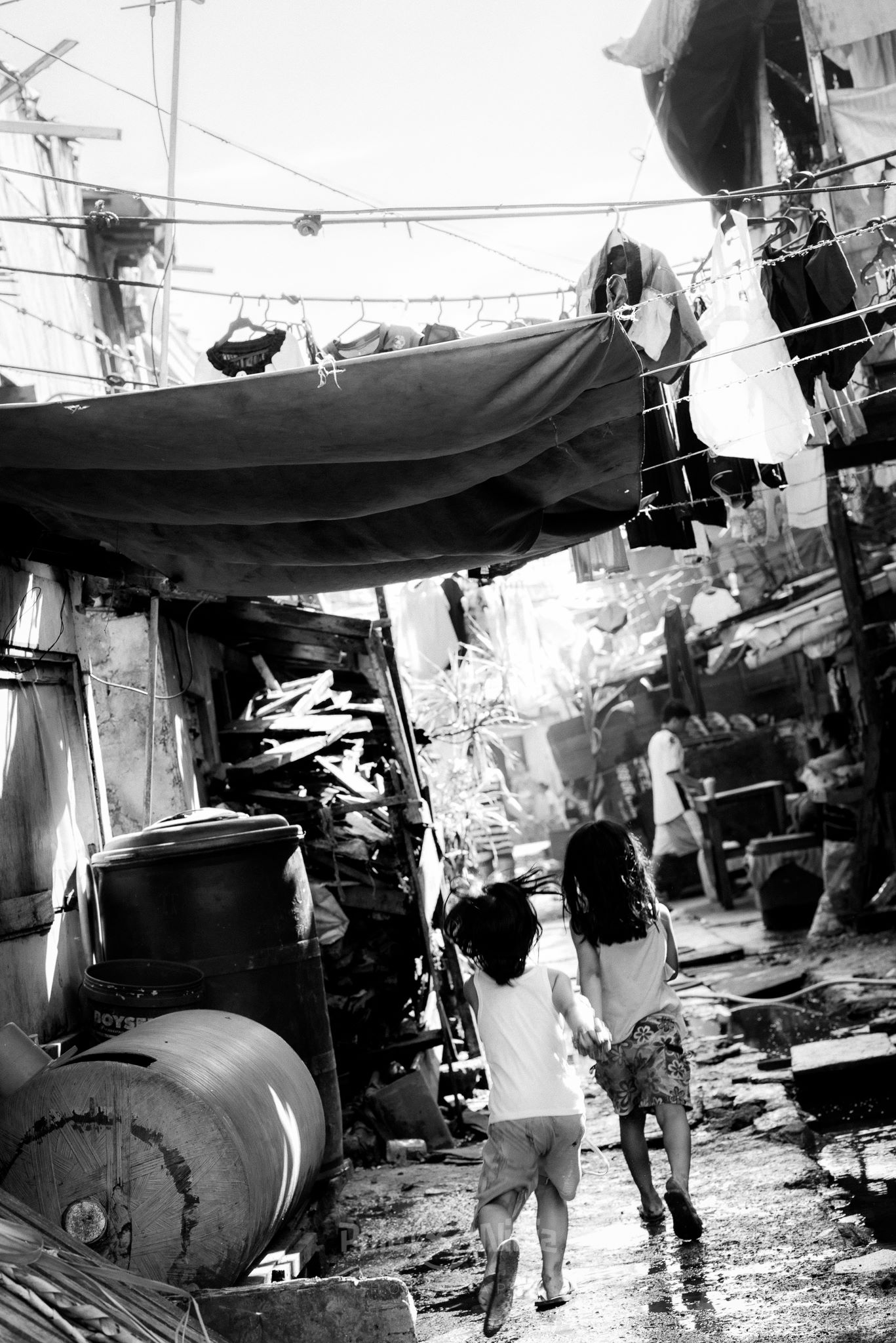
Artsy photo.
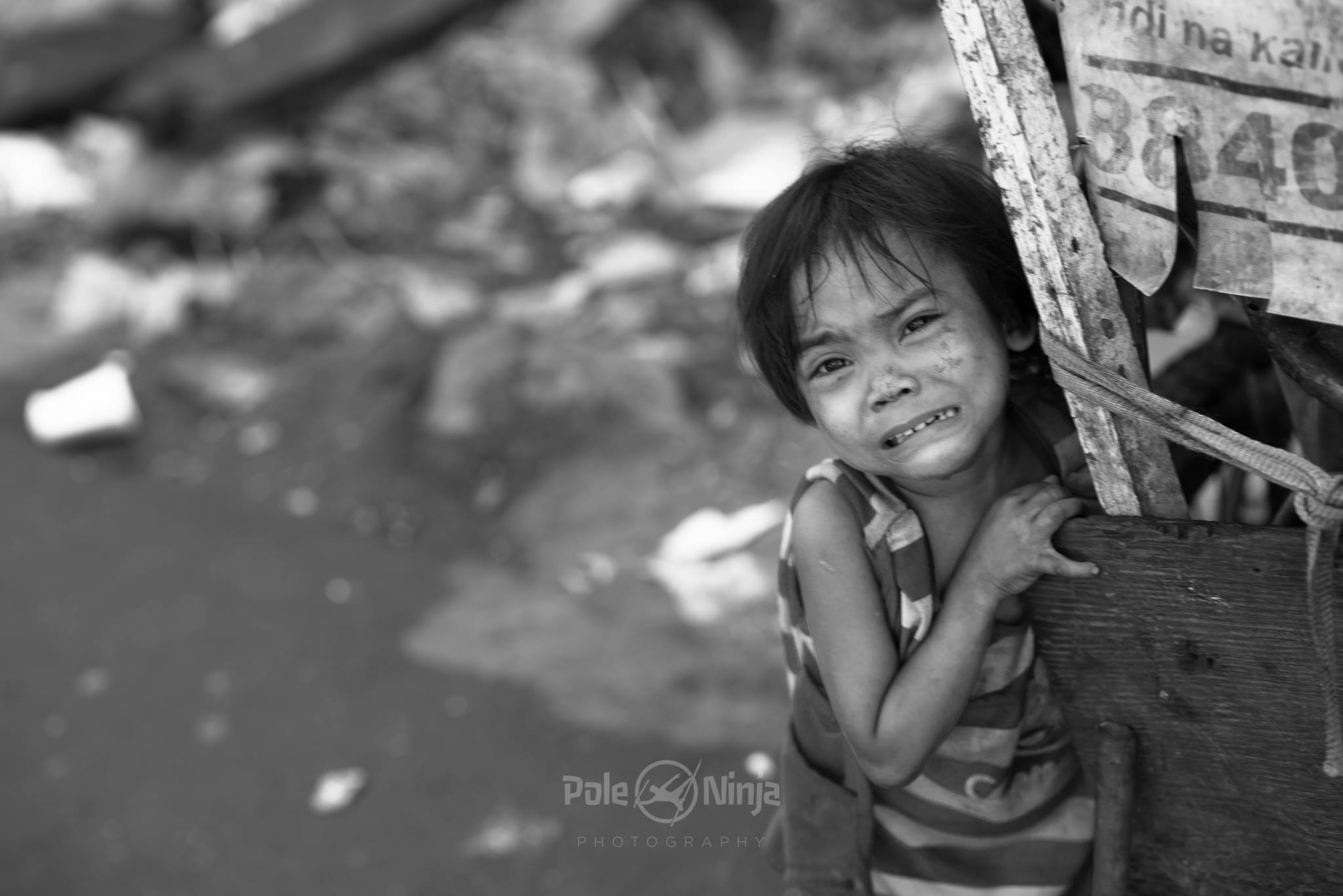
Sorry for the blur, but yes, as children are, they can cry. Though this looks like a poster for feed-the-children, I don't think this is why she was crying at the moment.

One of the streets in Happyland just filled with trash.
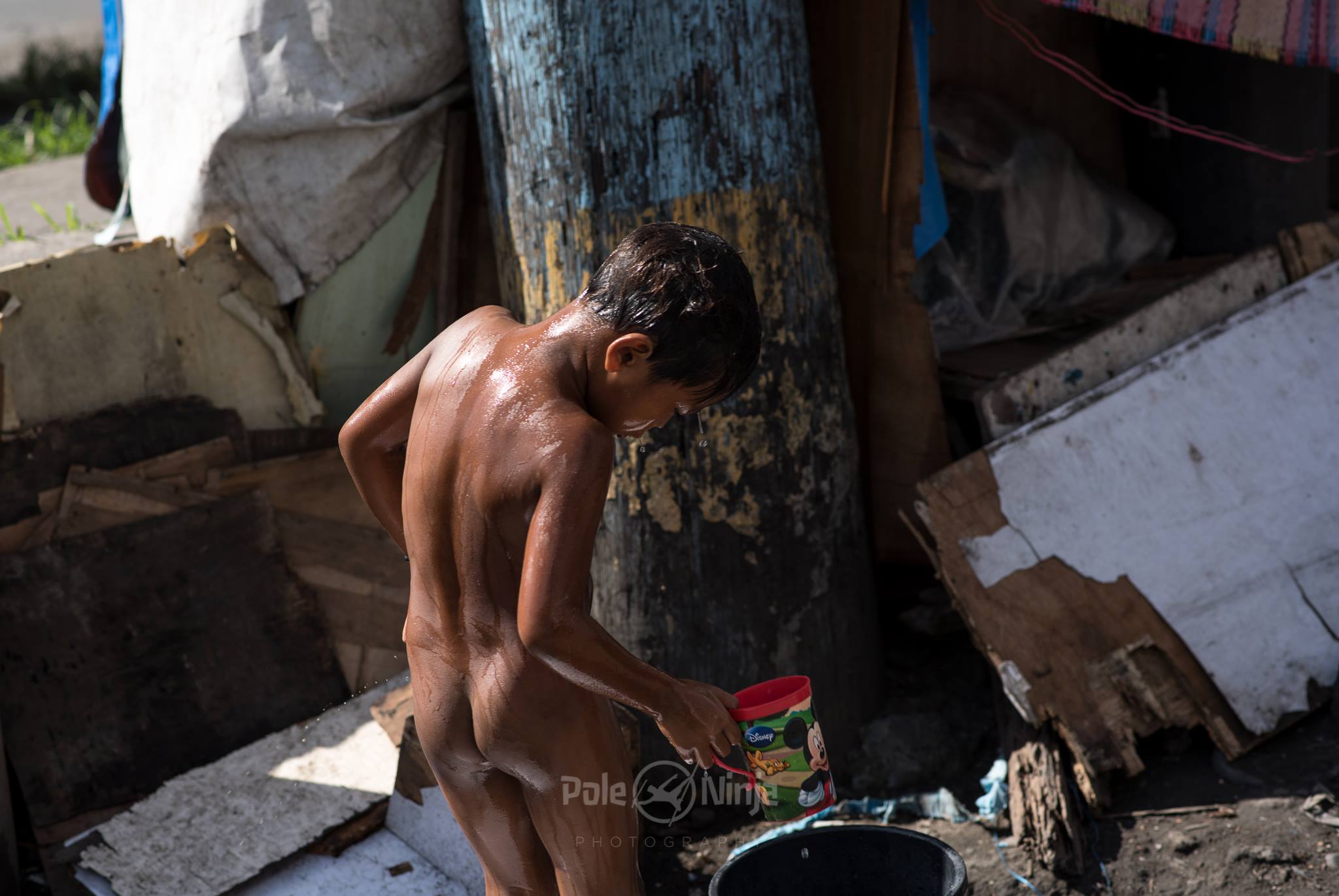
Since space is such an issue, bathing in public is quite common, using a cup of river water or still water. You can't see in these photos, but many families are living close by this shot out of concrete cylinders--sewage drain pieces, I think.
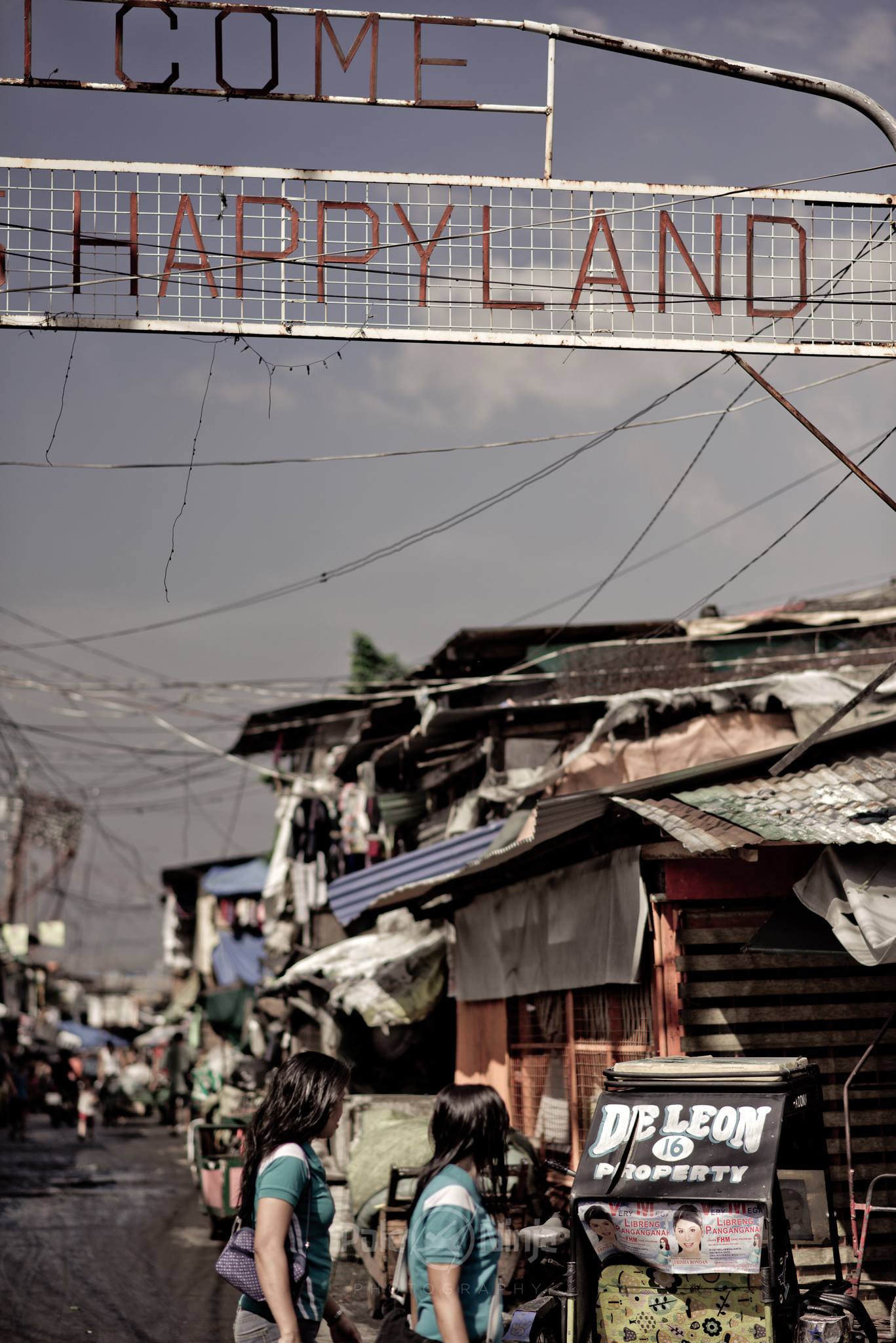
Happyland.
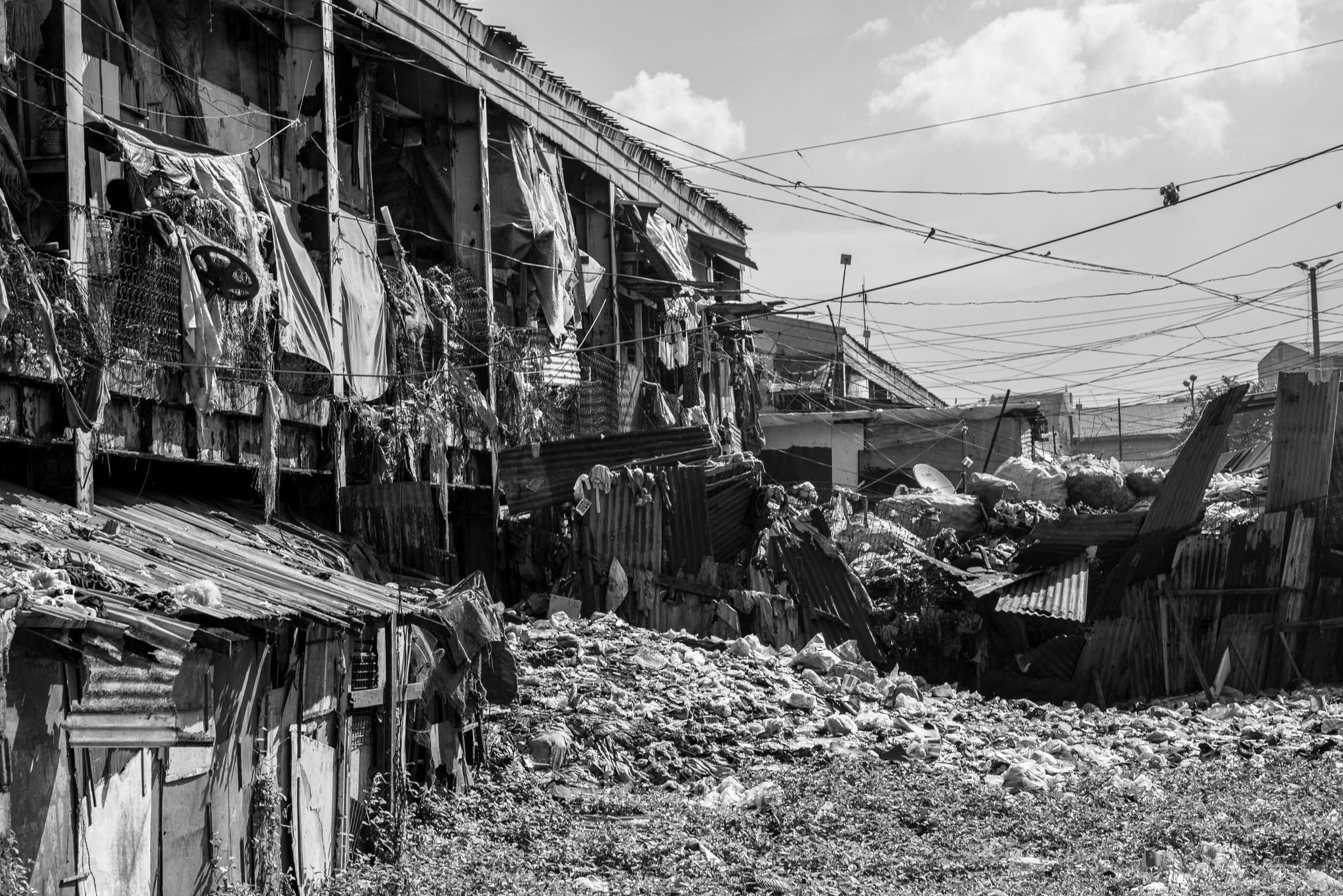
On the left are the homes the government has provided for the occupants of the slums.
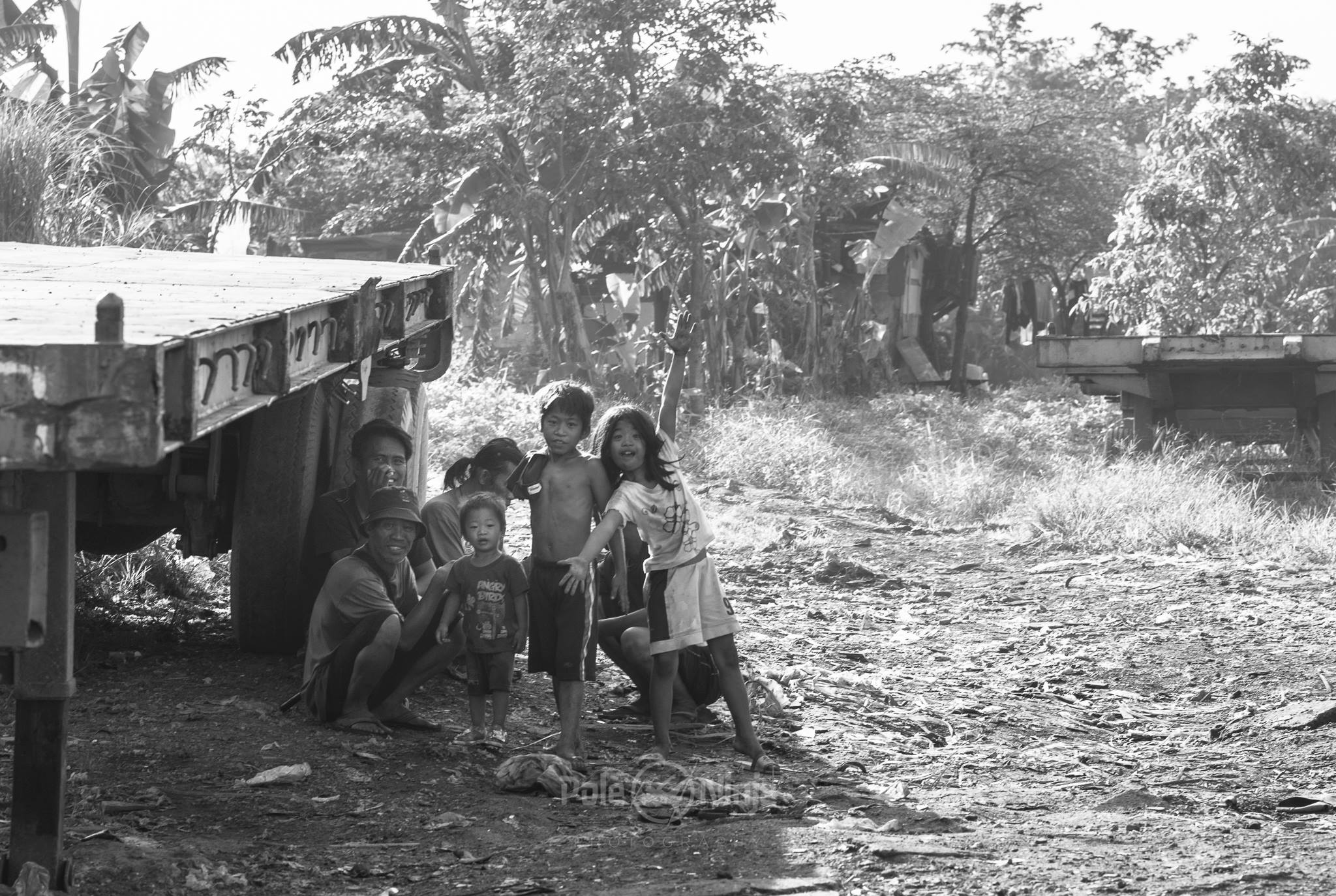
This is not happyland, but the old trash dump site where a few families still live. It's called, "Smokey mountain." It was called that because they would burn trash as a method to get precious metals from scraps.
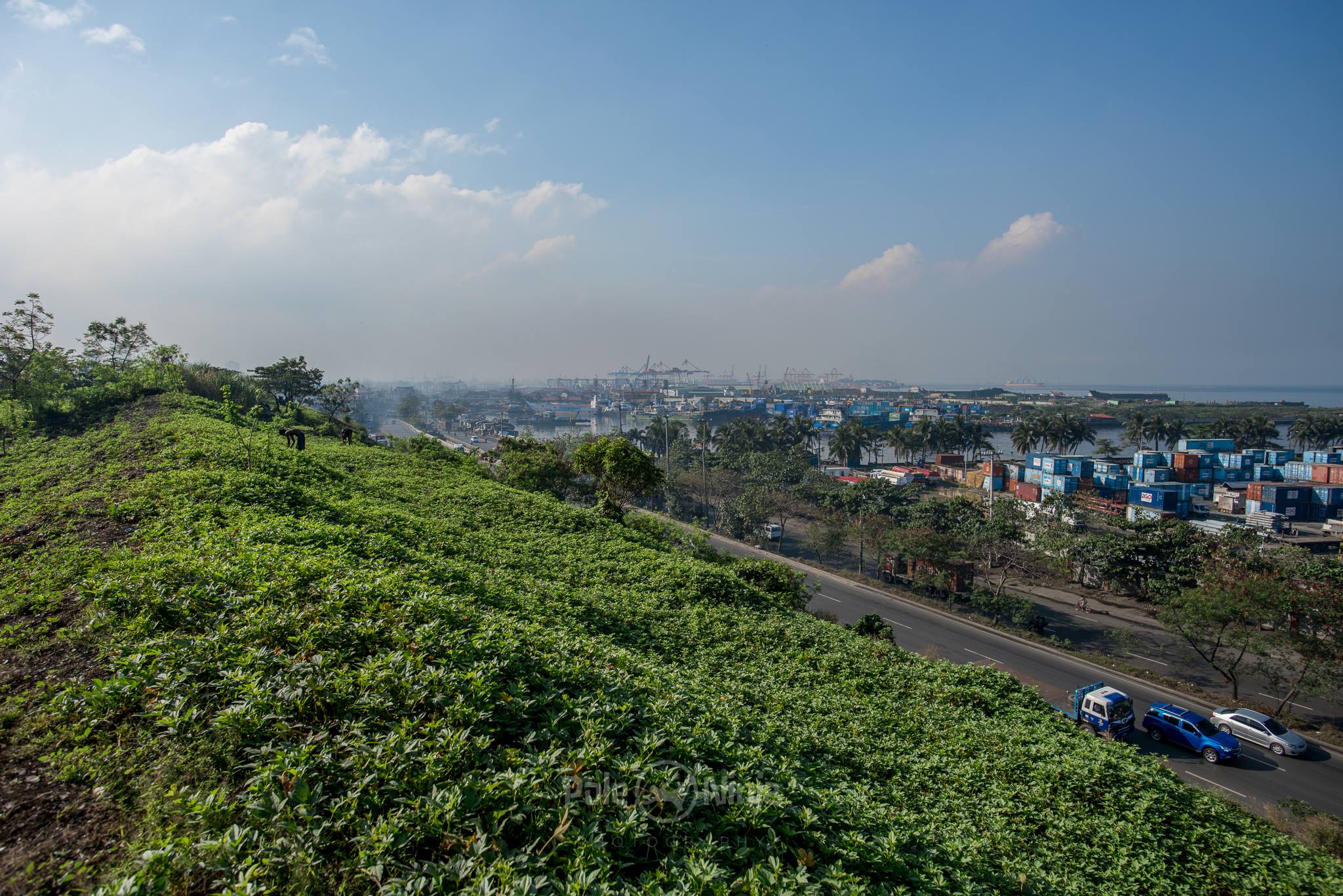
Smokey Mountain. It used to be as jam packed as Happyland. Here's a link to what it used to look like: https://www.google.com/search?q=smokey+mountain+philippines&espv=2&biw=1424&bih=757&tbm=isch&imgil=_Xvg0_pRp2FBmM%253A%253BQVI9RtLkiPAnAM%253Bhttp%25253A%25252F%25252Fwww.pbase.com%25252Fimage%25252F106900232&source=iu&pf=m&fir=_Xvg0_pRp2FBmM%253A%252CQVI9RtLkiPAnAM%252C_&ved=0ahUKEwih6aablrnKAhUW9GMKHZ5TDIsQyjcILQ&ei=iOafVqGFJJbojwOep7HYCA
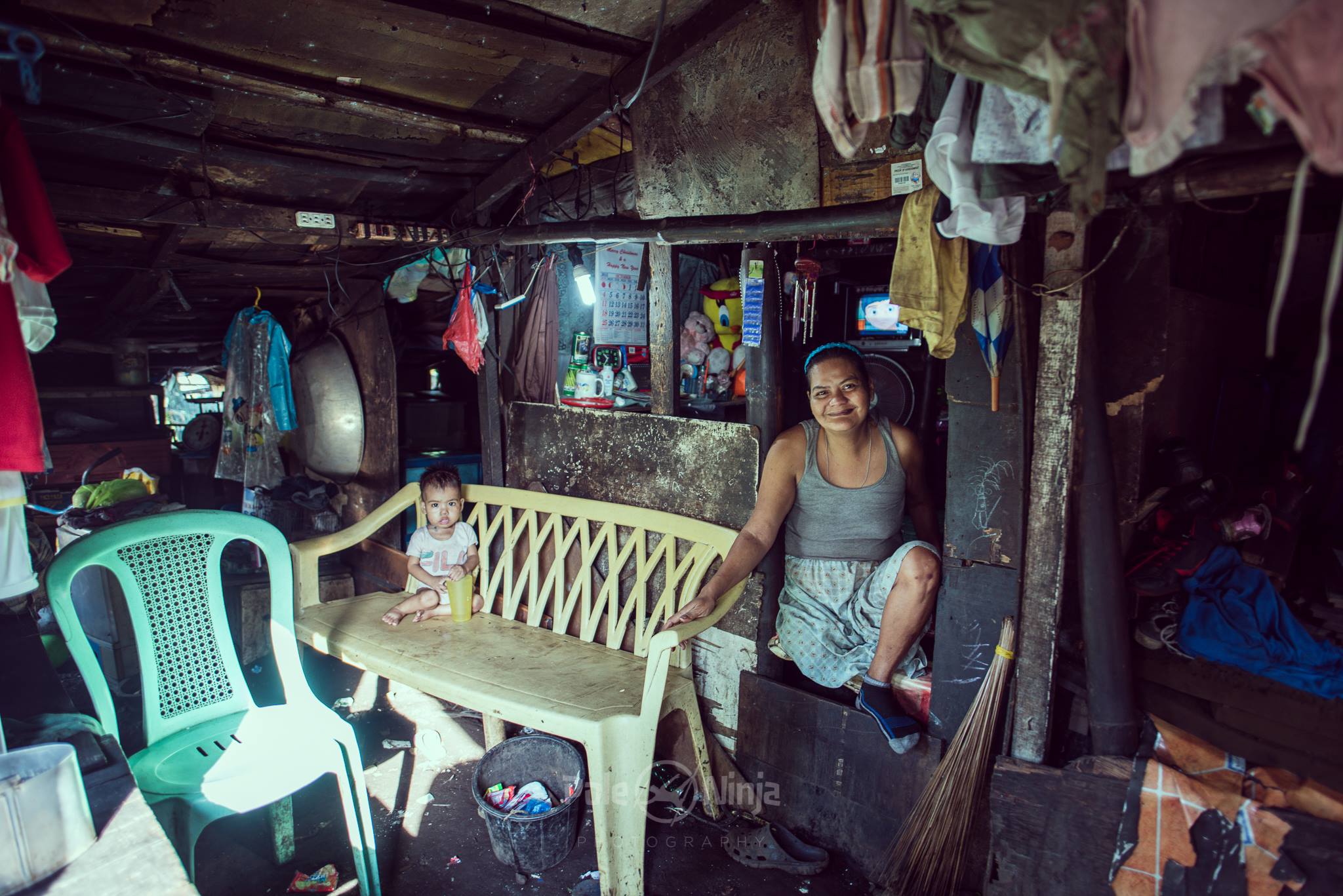
This woman in Smokey Mountain invited us in and offered us coffee. We politely declined, but she was very friendly.
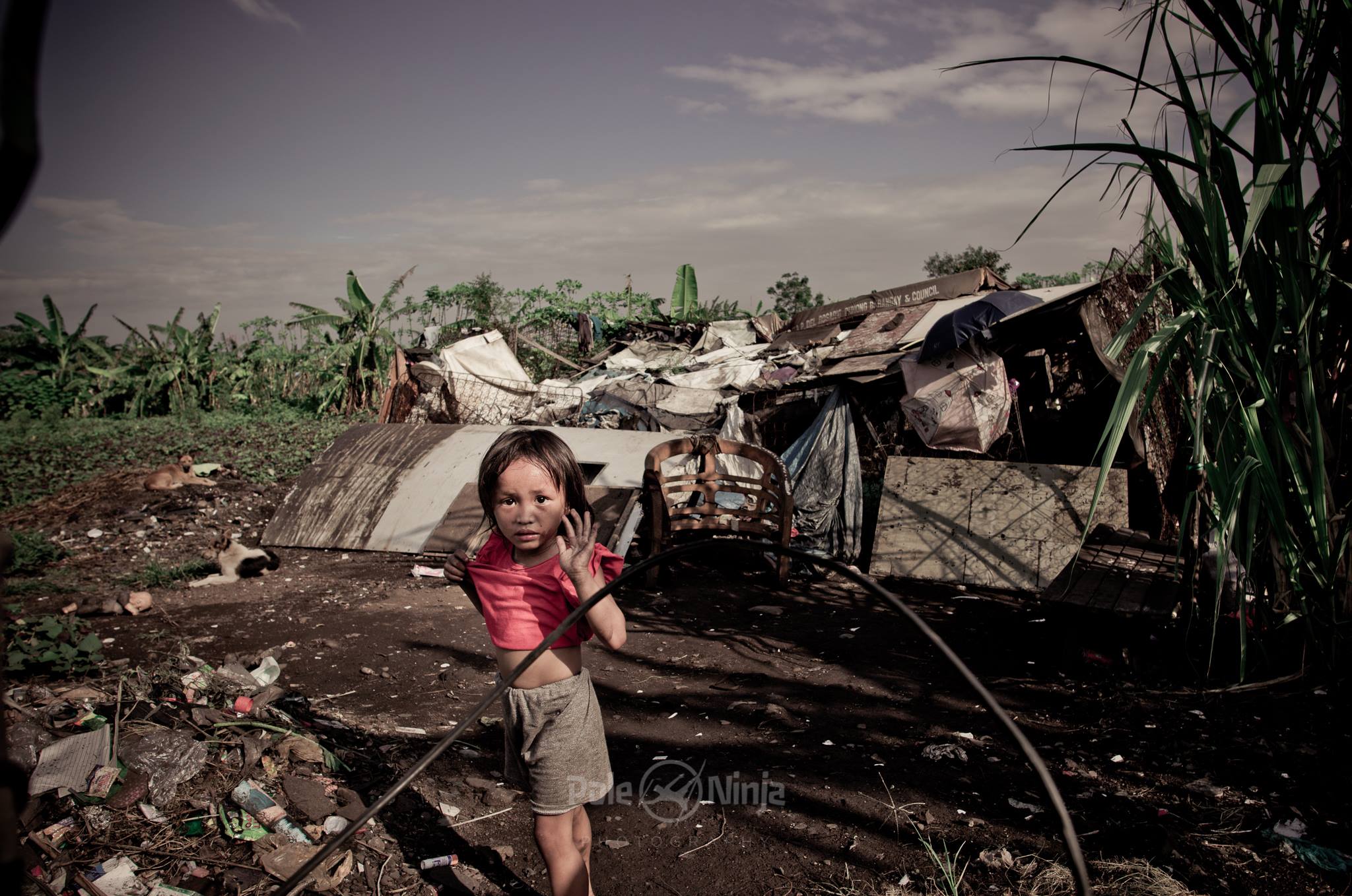
Smokey Mountain--a girl and her home.
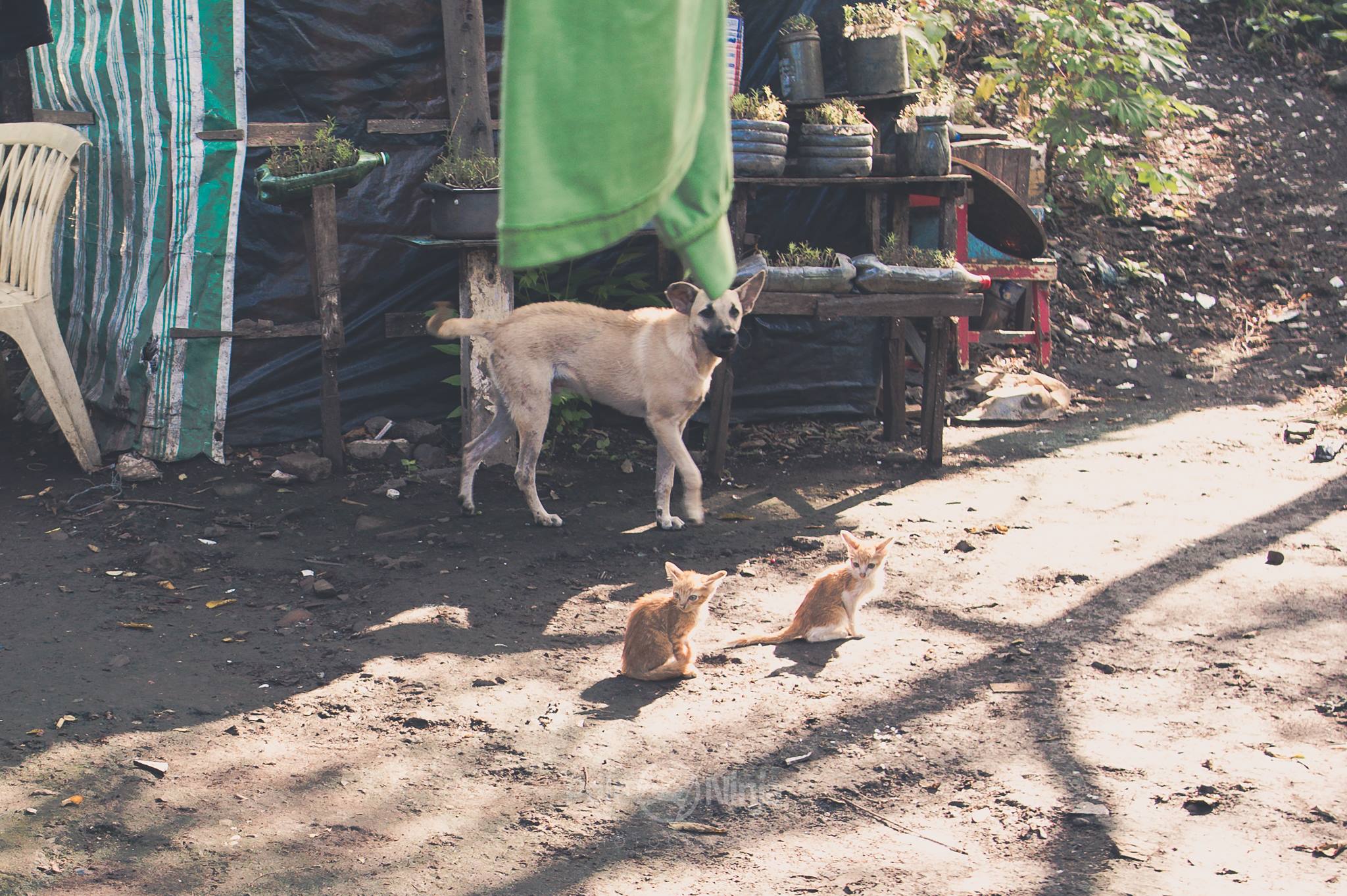
Smokey mountain and animals.

Happyland home entrance. They sort materials in these huge bags in front of their homes.

Lots of black and white photos because the high dynamic range of the shots.
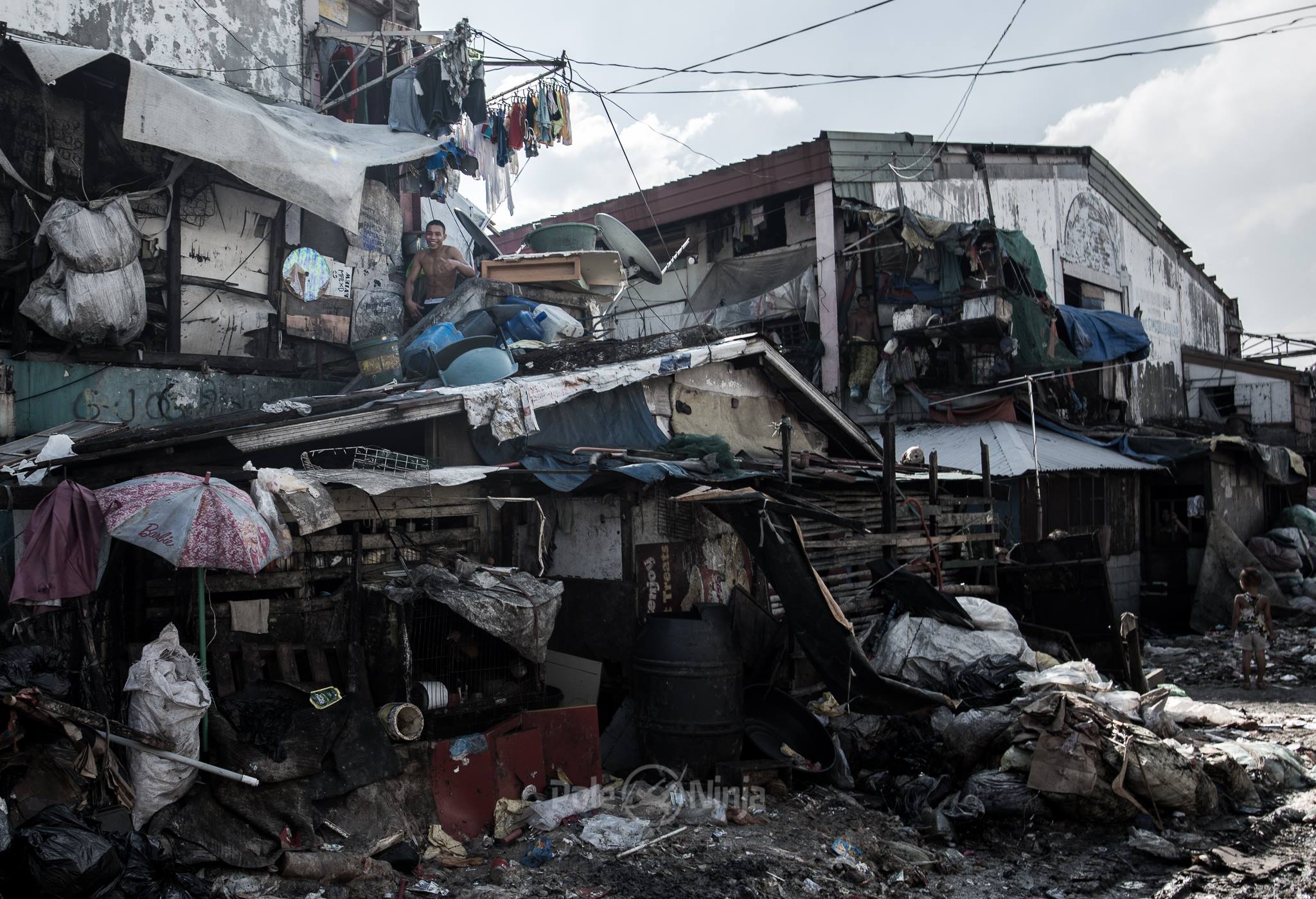
Even the adults were smiling and waiving. They would yell, "Hiii!" everywhere we went.

Charcoal is one of the ways they make money. I didn't quite know how it worked, but they seemed to make the most out of charcoal, plastic, metals, scrap wood, bed springs, garlic, etc etc. Micro industries, really, run by the hard work of the people in the slums.
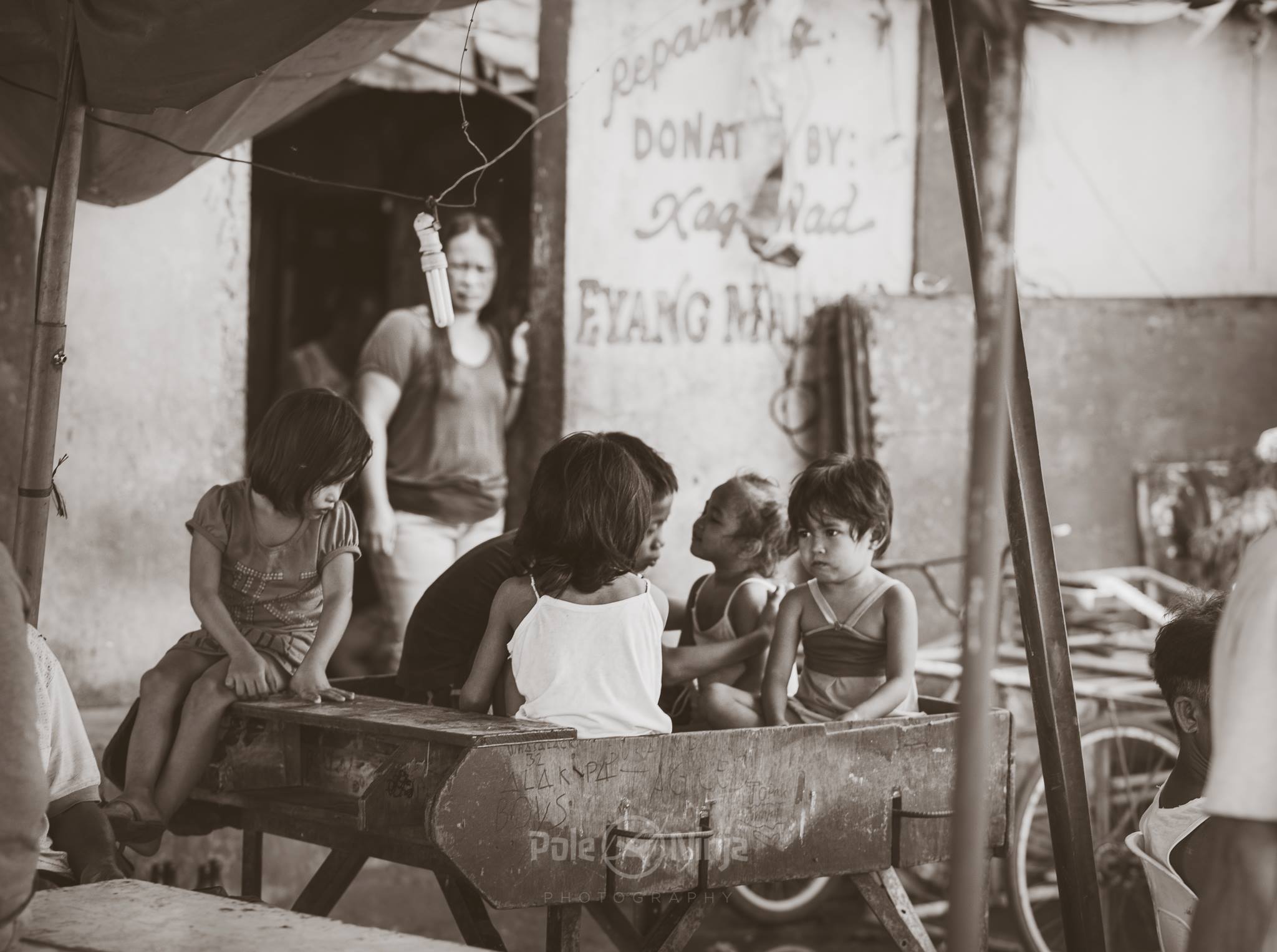
Often we'd see kids playing in or sleeping on tables that looked like they used to belong to some industrial machinery. Seeing a kid passed out on a sawblade was an interesting sight.
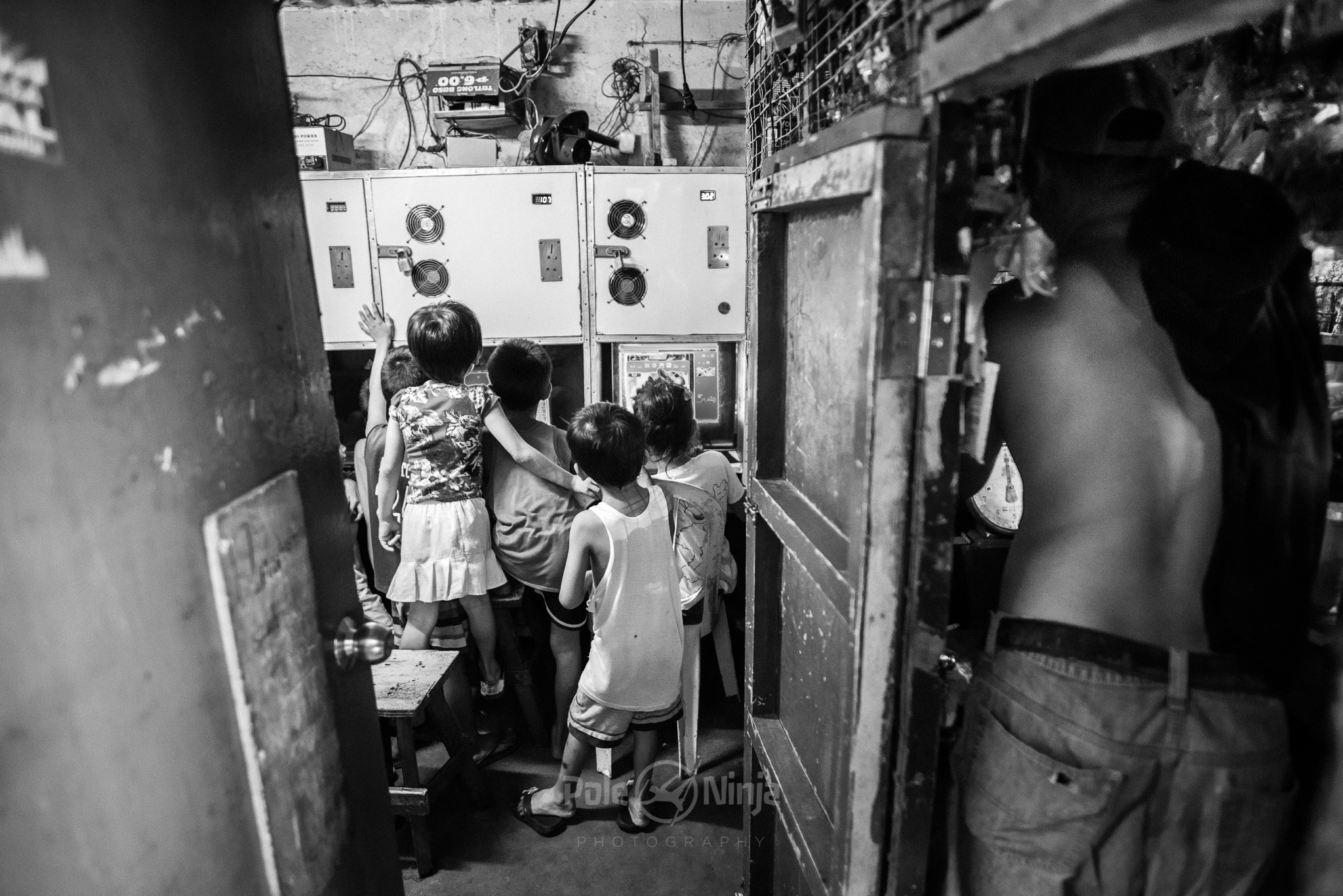
Okay, so computers. They have old computers, and pretty much internet cafes. Yup, Internet cafes in the slums. They charge something like 1 philippino peso for 7 minutes of play time. So while you walk the streets, you see kids watching youtube and playing first person shooters. They knew american pop culture better than me! They'd come running up, singing taylor swift and at first it was really confusing. Btw, one peso is like 2-3 cents.
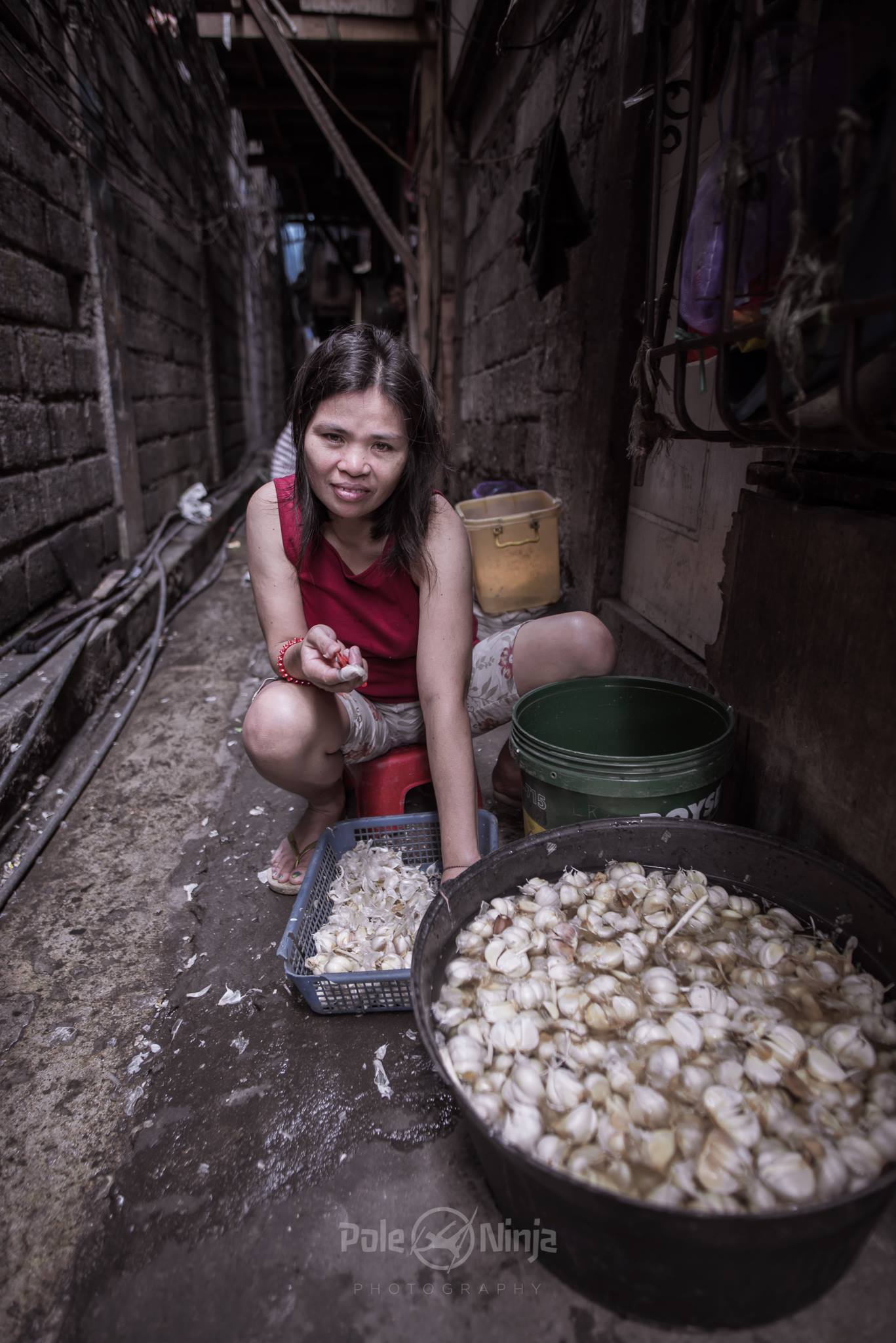
Garlic is a huge thing here for income. They peel garlic for 5ish pesos per hour, and there are kids and women everwhere doing this work. I wondered if the garlic ended up being part of why they seemed healthier than they should be (antibacterial/fungal/viral properties).
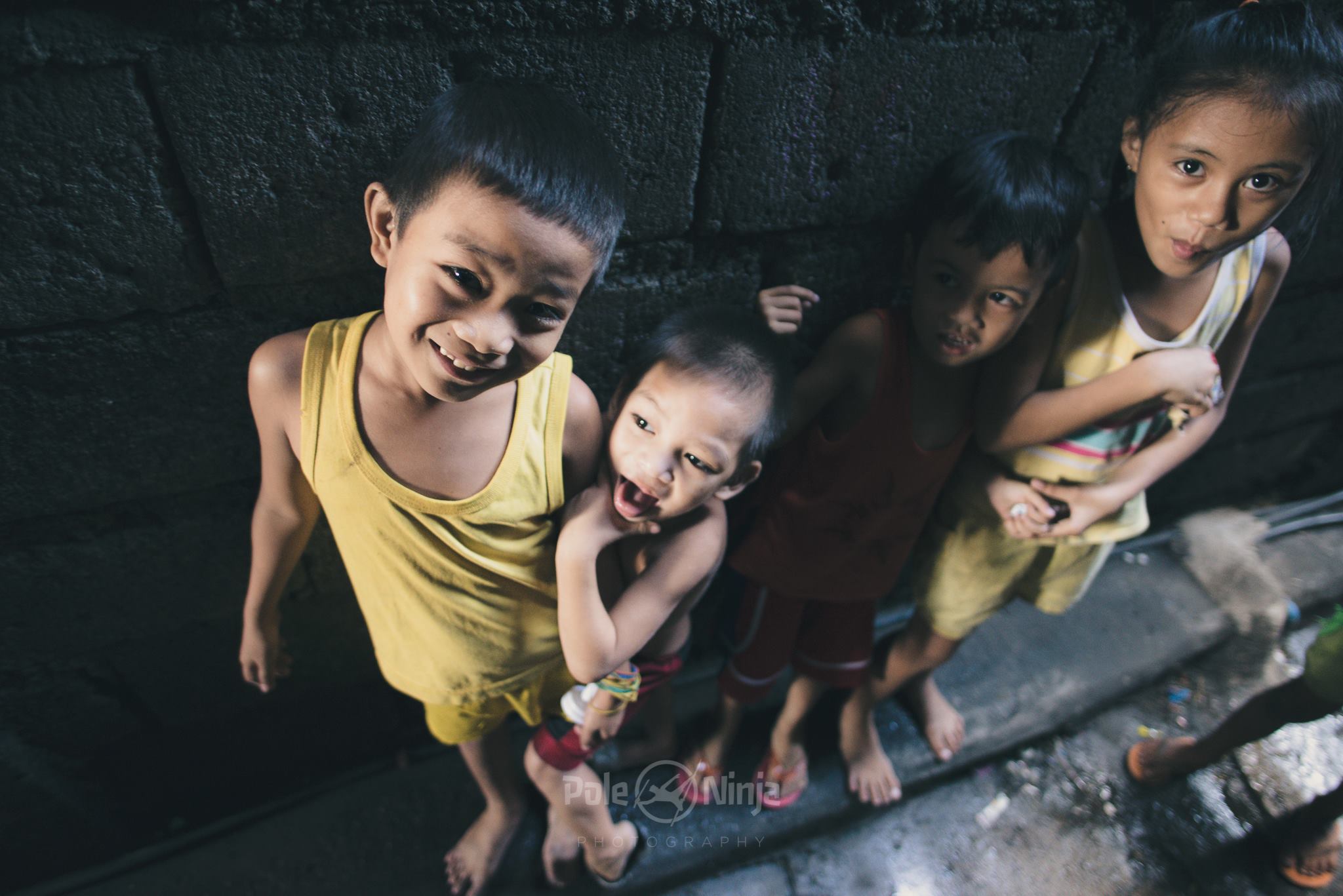
The kids often would come running up and grab my arm or Marlo's. They'd yell, "Daddy daddy daddy!" and remark about our muscles. It was quite cute and eye opening, how we appeared to them.
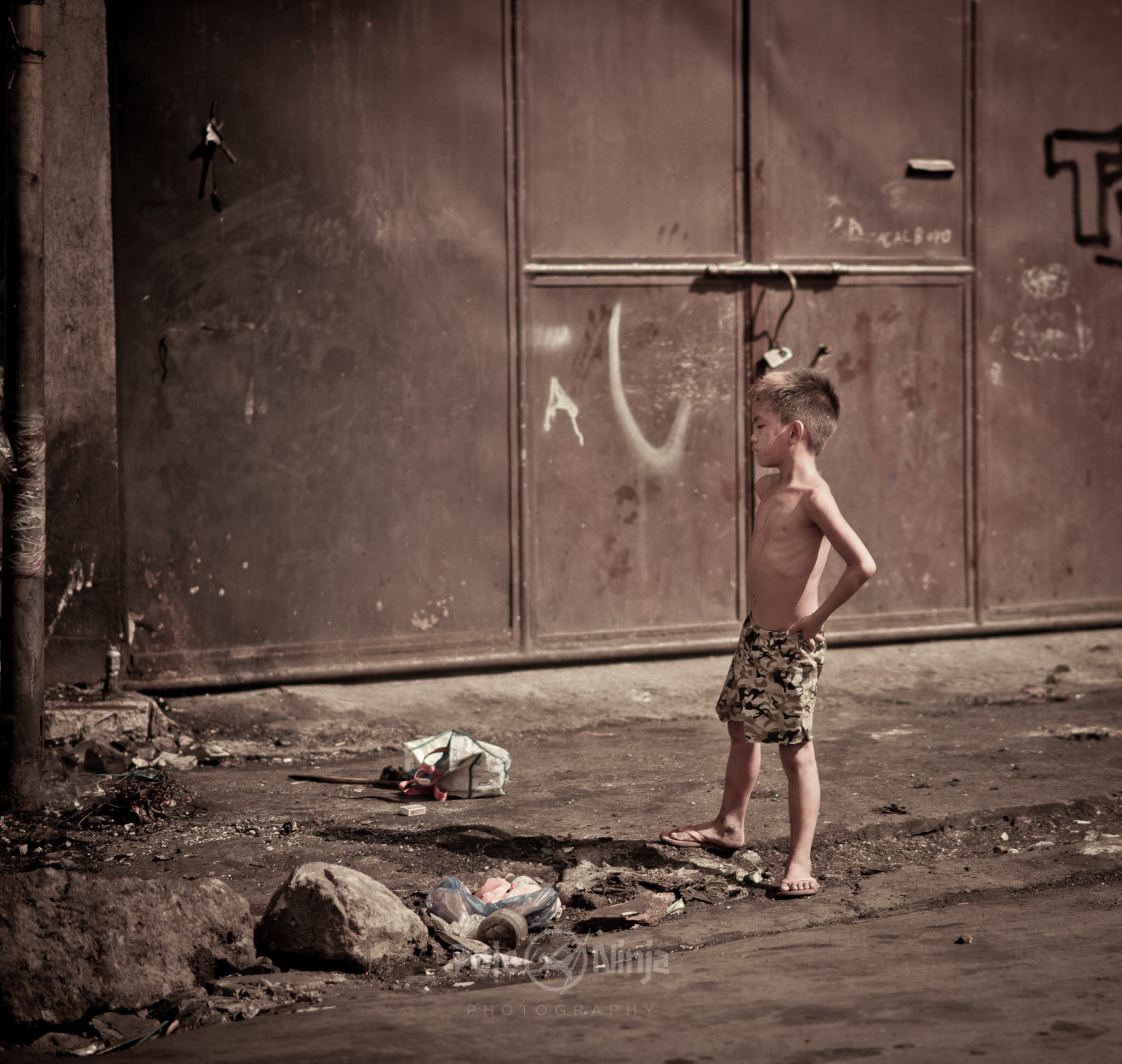
Outside of the slums direct are families that live on the streets. They are really everywhere. More on that in other photos.

Shot from across the river. more on this in other photos.
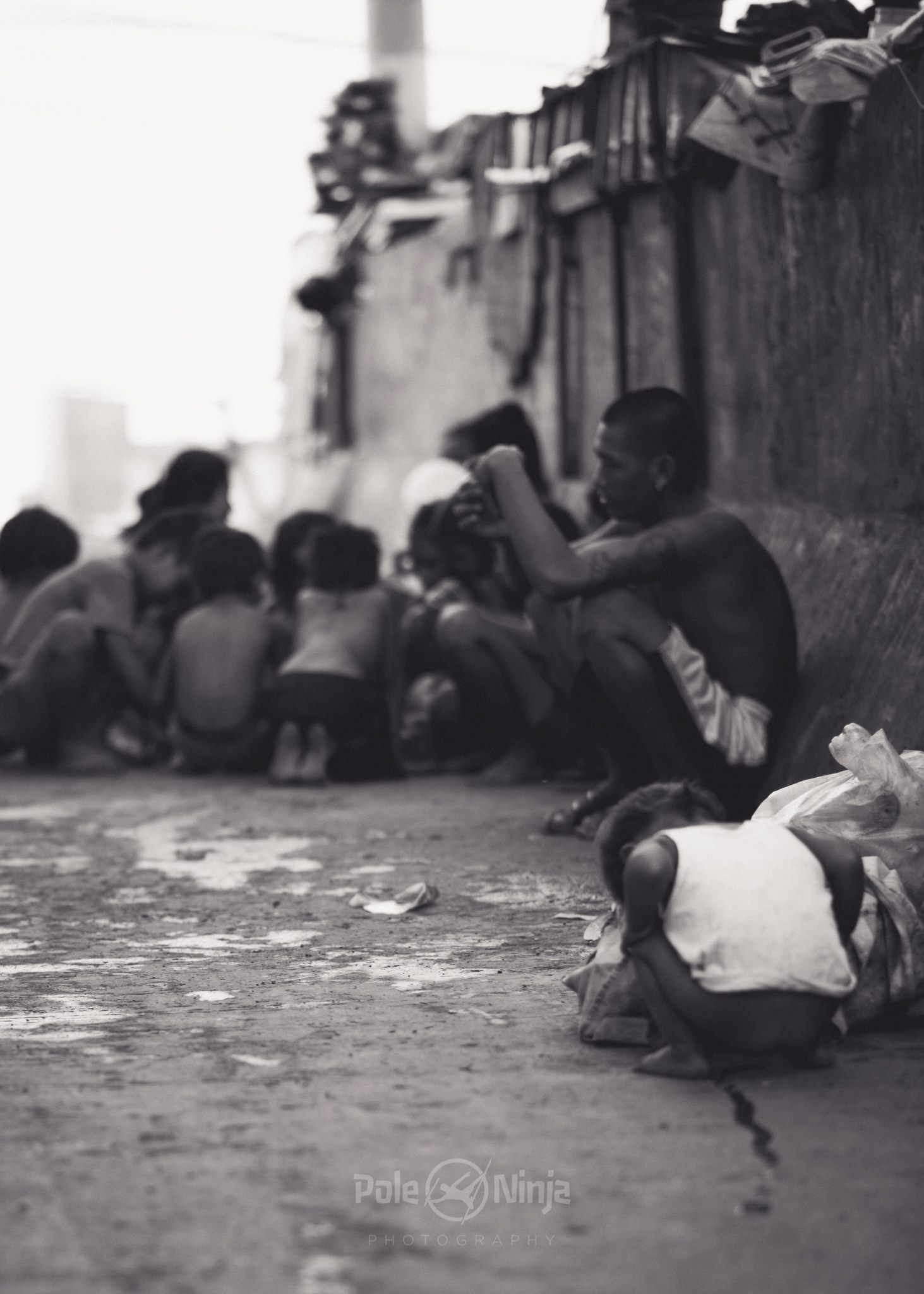
Kids tend to gather and play. They were playing cards and dice-like games. Public urination and defication is common. I saw on several occassions kids and adults taking a dump on the side of the road, or letting a stream out just facing a different direction. Something interesting about this street, though:
To the left of this photo is the government official's mansion. To rule over an area, you have to live in it for a certain number of years in order to understand the district you're determining laws over. So often, the official simply buys a house and never lives in it.
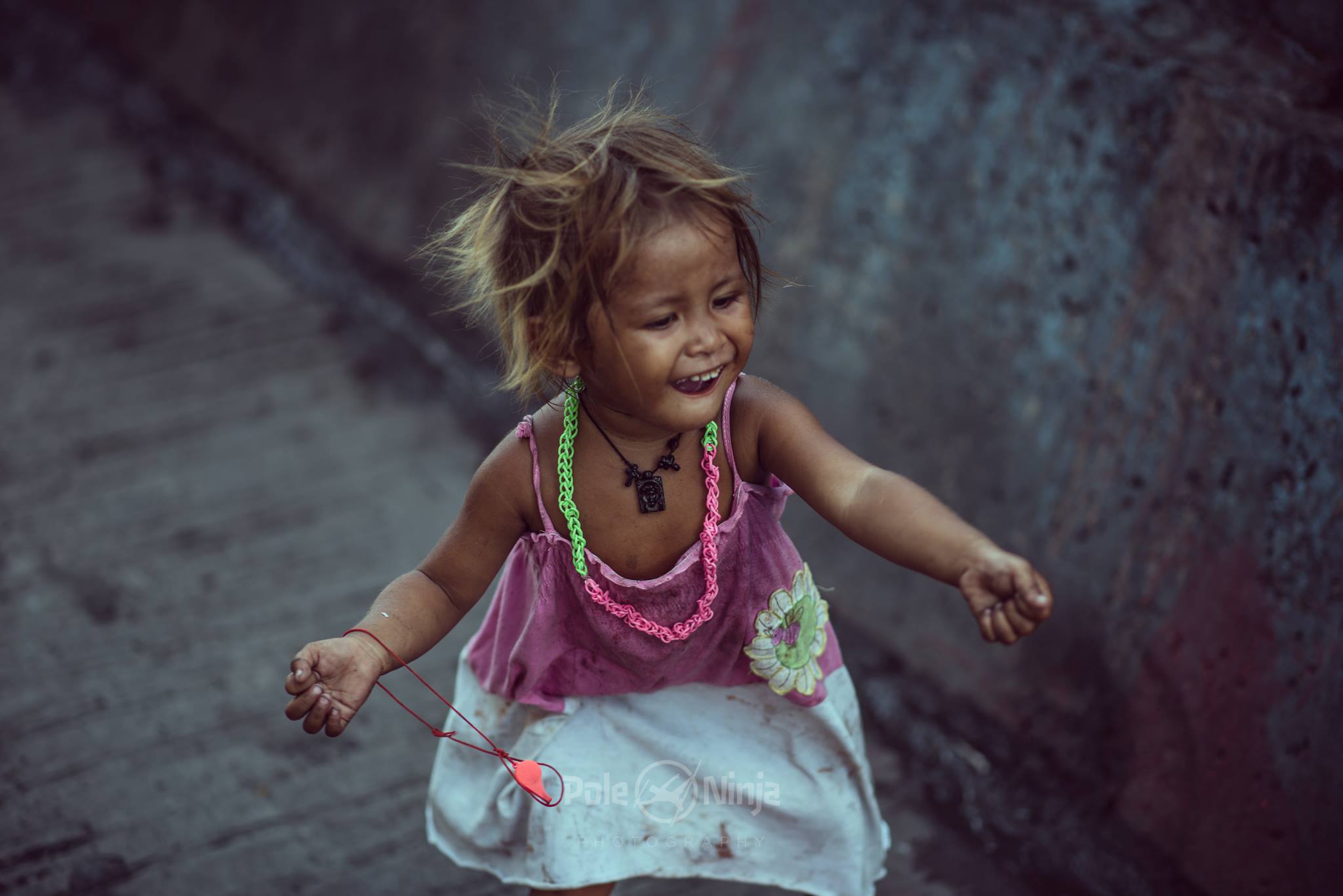
A beautiful girl running past me.
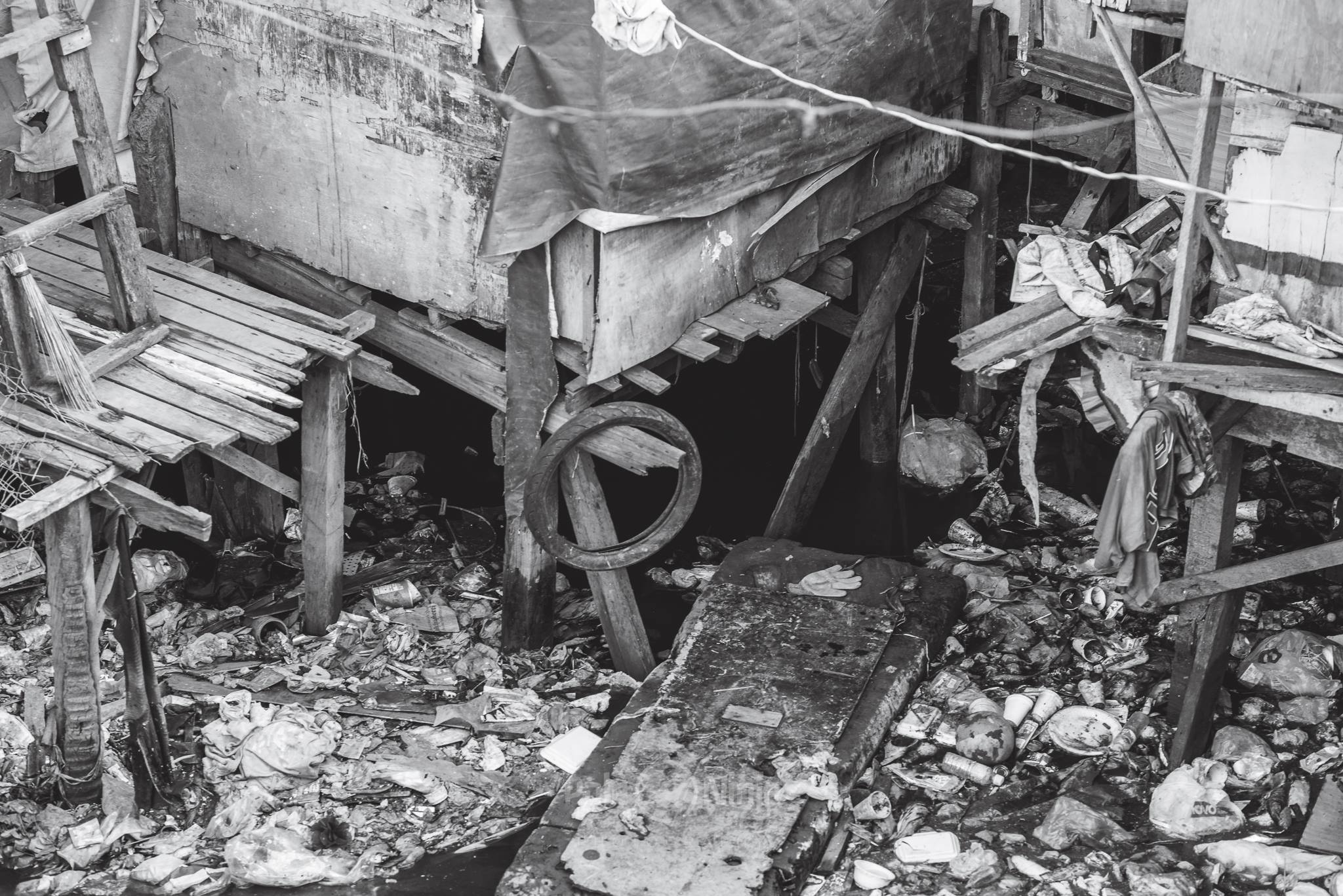
When you live above a river, you get a latrine built-in....until the waters rise and flood your house with sewage and waste, and destroys your home. The government actively prohibits this kind of building, under the bridge, but people do it anyway due to space. We were able to walk through a few of these where we saw, honestly, such skeletons of people moving at such a slow rate that I felt like if it did flood, they wouldn't be able to move to get out. This section was heartbreaking, and I chose not to photograph out of sensitivity for the situation.
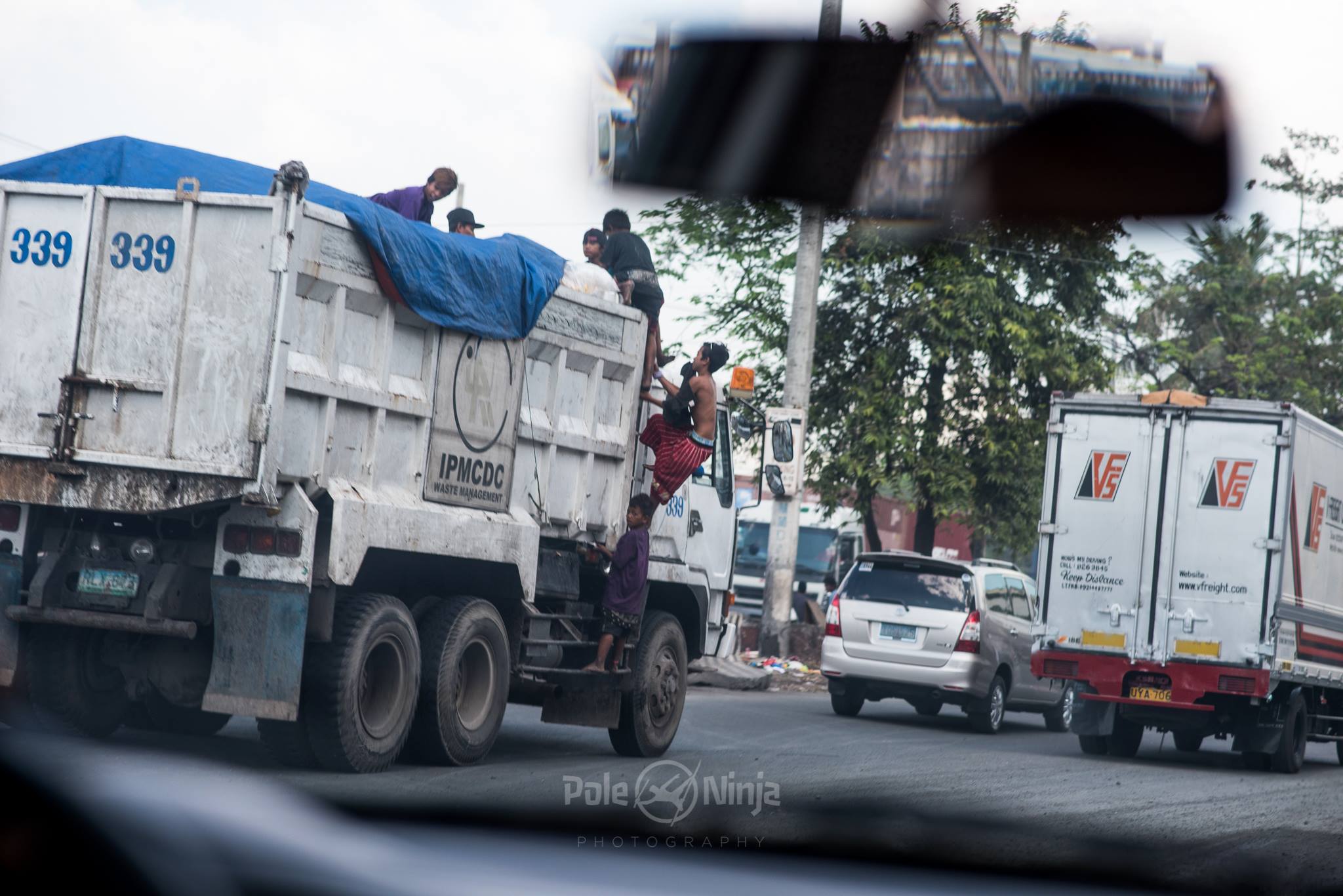
Safety on roads has different standards out here ;).
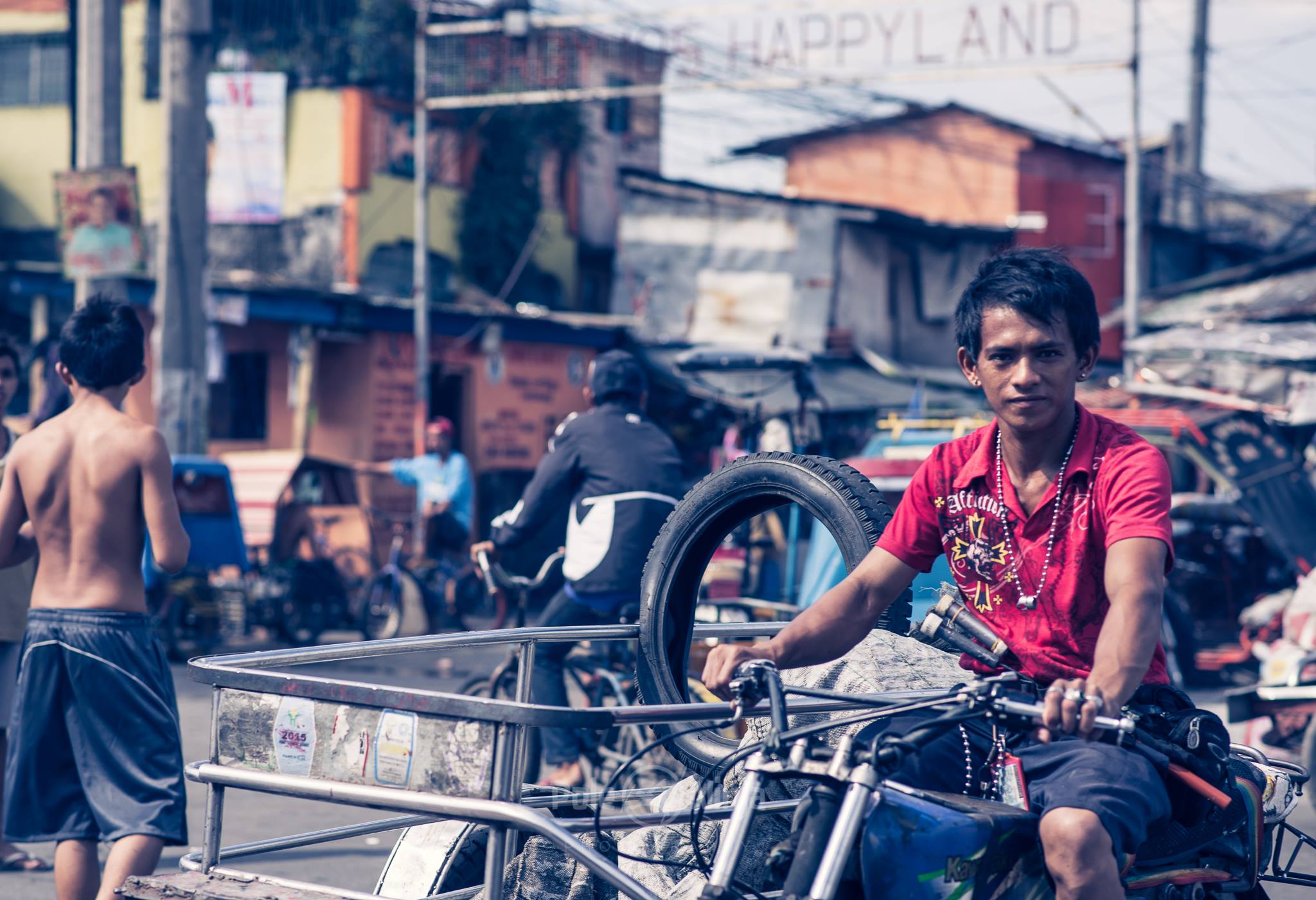
Sometimes, you're lucky enough to have someone who appears to pose for the camera.

A family living on the road.
































To me, this was the shot that made the entire journey worth it. This young girl, in the middle of the slums, peeked through the store window. I barely got the shot off before she was gone, like she was never there.
The stores are relatively few, and what they sell is almost entirely scavenged. But in it is the microeconomy that could seed the beginnings of something more, someday.
Men, women, children all dig through the trash, looking for scraps of meat. KFC is great for them, and they often strip that meat, clean it, and sell it again. Besides eating it themselves, most go out and sell the recovered food at street carts. We were given the opportunity to eat some of this, which they called, "pagpag."
I think this was the most food I saw the entire time through the slums. And of course, the cat was adorable.
I thought this kid looked like a monk as he came running forward toward us. As with the other picture, I don't know why he is crying, so please don't make assumptions. But I did feel bad for whatever his plight was.
There is very little room, so they've made these houses on stilts that sometimes are threatened by rising waters. But as dangerous as it is, especially under the bridges, they still do it.
Artsy photo.
Sorry for the blur, but yes, as children are, they can cry. Though this looks like a poster for feed-the-children, I don't think this is why she was crying at the moment.
One of the streets in Happyland just filled with trash.
Since space is such an issue, bathing in public is quite common, using a cup of river water or still water. You can't see in these photos, but many families are living close by this shot out of concrete cylinders--sewage drain pieces, I think.
Happyland.
On the left are the homes the government has provided for the occupants of the slums.
This is not happyland, but the old trash dump site where a few families still live. It's called, "Smokey mountain." It was called that because they would burn trash as a method to get precious metals from scraps.
Smokey Mountain. It used to be as jam packed as Happyland. Here's a link to what it used to look like: https://www.google.com/search?q=smokey+mountain+philippines&espv=2&biw=1424&bih=757&tbm=isch&imgil=_Xvg0_pRp2FBmM%253A%253BQVI9RtLkiPAnAM%253Bhttp%25253A%25252F%25252Fwww.pbase.com%25252Fimage%25252F106900232&source=iu&pf=m&fir=_Xvg0_pRp2FBmM%253A%252CQVI9RtLkiPAnAM%252C_&ved=0ahUKEwih6aablrnKAhUW9GMKHZ5TDIsQyjcILQ&ei=iOafVqGFJJbojwOep7HYCA
This woman in Smokey Mountain invited us in and offered us coffee. We politely declined, but she was very friendly.
Smokey Mountain--a girl and her home.
Smokey mountain and animals.
Happyland home entrance. They sort materials in these huge bags in front of their homes.
Lots of black and white photos because the high dynamic range of the shots.
Even the adults were smiling and waiving. They would yell, "Hiii!" everywhere we went.
Charcoal is one of the ways they make money. I didn't quite know how it worked, but they seemed to make the most out of charcoal, plastic, metals, scrap wood, bed springs, garlic, etc etc. Micro industries, really, run by the hard work of the people in the slums.
Often we'd see kids playing in or sleeping on tables that looked like they used to belong to some industrial machinery. Seeing a kid passed out on a sawblade was an interesting sight.
Okay, so computers. They have old computers, and pretty much internet cafes. Yup, Internet cafes in the slums. They charge something like 1 philippino peso for 7 minutes of play time. So while you walk the streets, you see kids watching youtube and playing first person shooters. They knew american pop culture better than me! They'd come running up, singing taylor swift and at first it was really confusing. Btw, one peso is like 2-3 cents.
Garlic is a huge thing here for income. They peel garlic for 5ish pesos per hour, and there are kids and women everwhere doing this work. I wondered if the garlic ended up being part of why they seemed healthier than they should be (antibacterial/fungal/viral properties).
The kids often would come running up and grab my arm or Marlo's. They'd yell, "Daddy daddy daddy!" and remark about our muscles. It was quite cute and eye opening, how we appeared to them.
Outside of the slums direct are families that live on the streets. They are really everywhere. More on that in other photos.
Shot from across the river. more on this in other photos.
Kids tend to gather and play. They were playing cards and dice-like games. Public urination and defication is common. I saw on several occassions kids and adults taking a dump on the side of the road, or letting a stream out just facing a different direction. Something interesting about this street, though:
To the left of this photo is the government official's mansion. To rule over an area, you have to live in it for a certain number of years in order to understand the district you're determining laws over. So often, the official simply buys a house and never lives in it.
A beautiful girl running past me.
When you live above a river, you get a latrine built-in....until the waters rise and flood your house with sewage and waste, and destroys your home. The government actively prohibits this kind of building, under the bridge, but people do it anyway due to space. We were able to walk through a few of these where we saw, honestly, such skeletons of people moving at such a slow rate that I felt like if it did flood, they wouldn't be able to move to get out. This section was heartbreaking, and I chose not to photograph out of sensitivity for the situation.
Safety on roads has different standards out here ;).
Sometimes, you're lucky enough to have someone who appears to pose for the camera.
A family living on the road.
